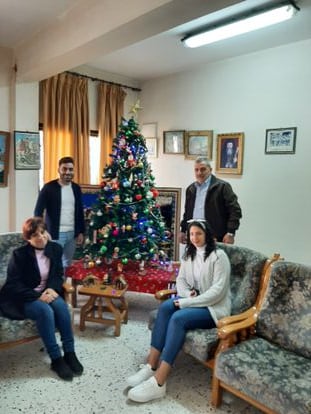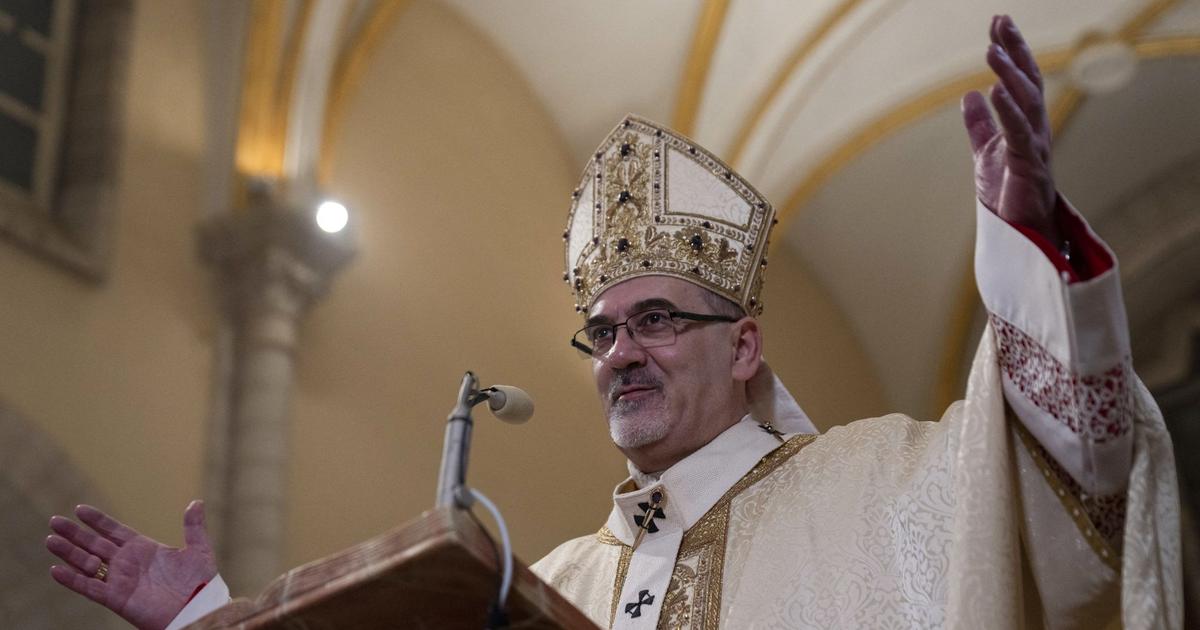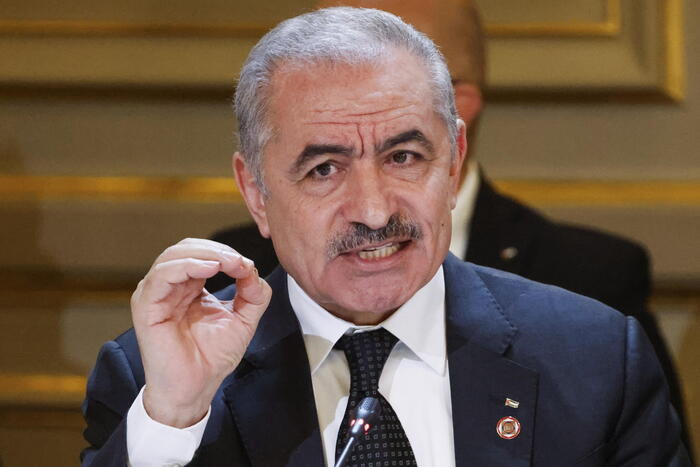The 1,070 Christians living in the Gaza Strip among two million Muslims start this Christmas not knowing how many more times they will be able to celebrate it again with garlands and Christmas carols in the Palestinian coastal enclave.
Four wars with Israel in just over a decade, the last last May, and a prolonged blockade have rendered the Strip virtually uninhabitable.
Its decline symbolizes the risk of extinction of Christianity in the Middle East, which was the cradle of the faith that decorated a quarter of the population under the Ottoman Empire.
"In this place the spirit of Christmas is lived as a paradox after a horrible year of war and misery," confesses Gabriel Romanelli, a 52-year-old Argentine priest who has spent half his life in the Middle East and now serves as parish priest of the temple of the Holy Family in the capital of Gaza.
"With 14 religious at their service, the 130 Catholics in the Strip are probably the best-served Christians in the entire Church," he says with Buenos Aires irony as he brews a mate surrounded by Christmas decorations.
Gabriel Romanelli, parish priest of the Church of the Holy Family, on the 14th in Gaza.
/ JCS
The innocent joke cannot hide the uneasiness of his words about a dwindling community. “In 2005, when I first came as curate, there were about 3,000 Christians in Gaza. Today they barely exceed a thousand; in their great majority faithful of the Greek Orthodox rite, preponderant in Palestine ”, he laments. "Since then, conflicts have occurred and forced isolation has spread misery."
Half of the Christians in Gaza have requested permission from the Israeli authorities to travel to the West Bank and attend the Christmas religious celebrations in Bethlehem starting this Friday, for Catholics, and on January 7, for Orthodox. "We hope that this year half a thousand faithful will be able to go to the Basilica of the Nativity from the Strip, after the closing of borders last year due to the pandemic and the restrictions of 2019, when only about 200 people obtained permission", explains the priest of the Sagrada Familia. "After all, they are asking to travel within their own country," he recalls. Men between the ages of 16 and 35 tend to have more difficulties, and sometimes permits are only granted to part of a family, effectively preventing travel.
"Israel, which limits the departure of Gazans as a rule, fears that many Christians no longer want to return from the West Bank and stay there," says the Argentine priest. "In addition to the aftermath of the wars and the blockade, the inbreeding among the few Christian families in Gaza makes many look for a partner to marry in other areas of Palestine," he reveals.
Father Romanelli was flustered on the eve of Christmas preparing the visit to the Strip by Pierbattista Pizzaballa, the Latin patriarch of Jerusalem. Along with the rest of the Christian religious leaders of the Holy Land, Archbishop Pizzaballa has signed an open letter denouncing "the continuous incidents (...) and the intimidation carried out by radical [Jewish] groups that Christians suffer" , which represent 2% of the population of the State of Israel. The Israeli government has been quick to refute the claims of the heads of churches for "distorting the reality of their community."
The Sagrada Familia enclosure is like a closed ghetto in the district of Zeitun, the old Christian quarter, through which a bell tower stands out without visible signs that announce Christmas. The large tree, the illuminations and decorations are kept indoors, where Catholic school students play soccer amidst images of Santa Claus. “As usual, we will have to toast each other. It is not easy to get wine in Gaza ”, acknowledges the parish priest, without mentioning the Islamist movement Hamas, which de facto governs the enclave since 2007 and which has imposed a dry law.
In the nearby temple of San Porfirio, the Greek-rite Orthodox Christian community also reserves stars and garlands for the interior of the enclosure. Kamel Ayad, a spokesman for the Orthodox Church in Gaza, questions Israel's permit system to travel to Bethlehem. "Once they gave it to a five-year-old boy, but they denied it to the rest of the family," he says. Ayad, a 45-year-old administrative technician, recalls when Christians could put up a Christmas tree in a square, their
boy-scouts
paraded down the street, as in the West Bank, and there was no restriction on travel to Jerusalem.
"We are few.
In 1948, when the State of Israel was created, there were more than 5,000 Christians in Gaza, but we represented 5% of the population, with influence in professional sectors such as the gold market ”, he recapitulates.
"But after the arrival of thousands of Palestinian refugees (70% of the current inhabitants of the enclave) we have almost disappeared," he concludes.
"And now they don't let us move in our own country either."
Palestinian Orthodox Christians, on the 14th in the social club of the church of San Porfirio de Gaza.
/ JCS
At the San Porfirio social club, a group of Orthodox Christians place Christmas decorations on the tree. The women wear their hair uncovered. At least within the enclosure that surrounds the temple. The Christian community of Gaza maintains several educational centers of recognized quality, in which some 10,000 Muslim students also study. “It is difficult to prevent young people from leaving, they have no future here,” admits Kamel Ayad. Half of the workforce in the Strip is unemployed. Among those under 25, the unemployment rate reaches 70%, according to the World Bank.
The few hundred Christians who arrive this Christmas to Bethlehem will find a Manger square empty of foreign pilgrims.
The spread of the pandemic through the omicron variant has forced the closure of the Israeli borders, through which almost all visitors to the Holy Land enter.
After having received 1.5 million tourists in 2019 and for the second consecutive year, Bethlehem, the cradle of Christianity will remain desolate during its great annual celebration for the birth of Jesus.
The subsequent flight of the Holy Family, which religious tradition directed towards the Gaza Strip, seems to have taken the opposite direction two millennia later.
Follow all the international information on
and
, or in
our weekly newsletter
.







